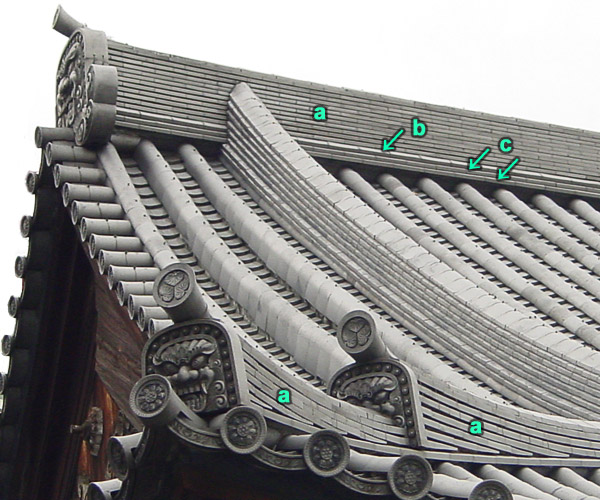| Also
noshizumigawara ΰlΟ’. The ancient name was *tsutsumigawara
οέ’ (ridge tile). A very thick, slightly curved, rectangular tile with
an incised line that runs end to end through the center of the tile. The
line permits the tile to be divided easily whenever necessary. It is used
to cover the junction point where the broad concave roofing tiles *hiragawara
½’ and the semi-circular cover tiles *marugawara
Ϋ’ meet at the peak of the ridge. A variation is a single tile with pendant
sides called a 'boxed noshigawara' or hako noshigawara ΰl’.
It is possible that noshigawara originated from an ordinary female
tile *megawara ’,
now called hiragawara, but set upside-down to form a slightly
convex shape instead of the concave shape needed for the hiragawara.
This type of stacked tile varies in overall height and is placed on the
main ridge *oomune
ε, the corner ridges *sumikudarimune
χ~, off-spring ridges *chigomune
t and descending ridges *kudarimune
~. The name noshigawara came into use during the Edo period.
It is not clear why the change occurred, but some scholars suggest that
it is because the character noshi ΰl can be read noshi or nosu meaning
to smooth out or, by inference, to stretch, and because it is used in such
expressions as stretching abalone to dry noshiawabi ΰlιΈ, a paper
attached to gifts *noshigami
ΰl and a smooth, finish board noshi-ita ΰlΒ. |



